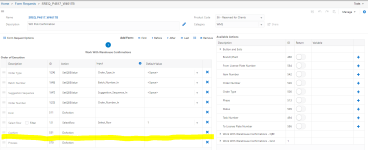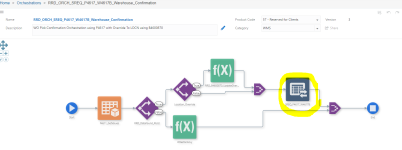JohnDanter2
VIP Member
Hi all
I have a very tricky one (again ) in that my recording of me confirming warehouse suggestions in P4617 W4617B has 3 steps.
) in that my recording of me confirming warehouse suggestions in P4617 W4617B has 3 steps.
1) First you enter your data in the QBE click Find
2) Highlight the row then click Confirm (this calls an edit line BSFN and loads cache) *** Importantly throws errors on the screen in this step ***
3) Then you click Process (this actually clicks Find then executes the End Doc if no errors found - it clears out any errors by clicking Find)
The trouble is if there is anything wrong in steps 1 and 2 and any errors were thrown (LOTN on hold for example) when you click Process in step 3 the code clicks Find and therefore wipes any errors. So the consuming code never knows there was an error thanks to step 3
Is it possible to split the SREQ recording into 2 main SREQs, one containing steps 1 and 2 and then step 3 (Process) in a sepearate step.
I am hoping that I can split the form recording into 2 but something tells me I'd need to reload all the data back into the second SREQ if there were no errors


Thanks
John
I have a very tricky one (again
1) First you enter your data in the QBE click Find
2) Highlight the row then click Confirm (this calls an edit line BSFN and loads cache) *** Importantly throws errors on the screen in this step ***
3) Then you click Process (this actually clicks Find then executes the End Doc if no errors found - it clears out any errors by clicking Find)
The trouble is if there is anything wrong in steps 1 and 2 and any errors were thrown (LOTN on hold for example) when you click Process in step 3 the code clicks Find and therefore wipes any errors. So the consuming code never knows there was an error thanks to step 3
Is it possible to split the SREQ recording into 2 main SREQs, one containing steps 1 and 2 and then step 3 (Process) in a sepearate step.
I am hoping that I can split the form recording into 2 but something tells me I'd need to reload all the data back into the second SREQ if there were no errors


Thanks
John

